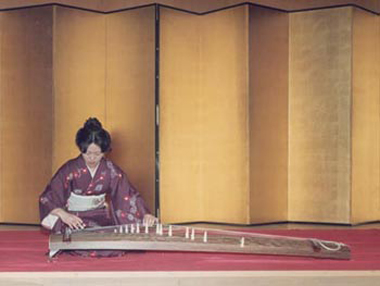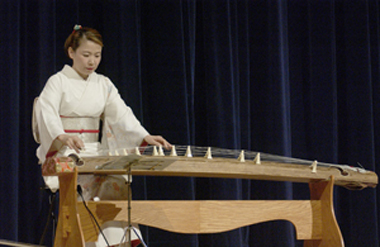Nihon jaia
Koto Concert
The koto (琴 or 筝) is a Japanese stringed instrument of Chinese origin, similar to a guzheng, which was introduced in Japan during the Nara era (710-793). It is a rectangular echo box, kiri wood (paulonia), about two meters long, with two openings in the back and thirteen strings. Often, the melodies played on the koto are also sung either by the instrumentalist itself or by other musicians. At present, this instrument has been frequently used not only in the interpretation of the traditional repertoire, but also in many contemporary genres. The Japanese harp is a chamber instrument that requires an audience willing and ready to enjoy the subtle and soothing sounds which recreates from nature.
Activity in the Festival:
Koto Concert.
Yoshie Sakai
Yoshie Sakai is the most recognized artist of koto existing in the Spanish state. Three decades ago, graduated from the School koto Ikuta Miyagi, Tokyo, where he also studied shamisen (lute) and jiuta (song of accompaniment). Since the early eighties to the present has participated in many festivals, courses, concerts and recitals of traditional Japanese music, as in the Royal High Music Conservatory of Madrid , Ateneo of Madrid, Cultural Centre Conde Duque, Official Language School, Autonomous University of Madrid, Technical University of Madrid, the Palace of the Botanical Garden, Auditorium of Caja Madrid, presentations of the Embassy of Japan, Socio-cultural Centre Navarrería of Pamplona, Alicante University, Complutense University of de Madrid, Auditorium of Zaragoza , Auditorium of Barcelona, Basauri Auditorium (Bilbao), Pilar de la Horadada in Alicante and several other schools, cultural centers, etc. Also, she has taught master classes and lectured at various schools, such as the Fourth Seminar of the Harp in the world at the Conservatoire of Music in Zaragoza.
More Info about Koto:





